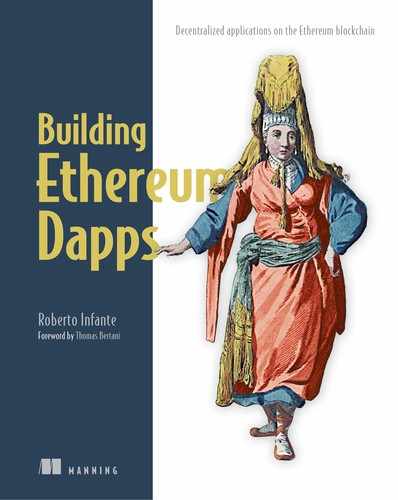Part 2.
Part 2 is all about smart contracts. This innovative technology has allowed Ethereum to move from single-purpose blockchains, supporting only cryptocurrencies, to multipurpose blockchains you can use to develop any decentralized application.
Chapter 5 introduces Solidity, the most popular language for writing smart contracts on the Ethereum Virtual Machine. Chapter 6 describes the structure of a typical smart contract through a sample crowdsale. This includes a constructor, state variables, functions, and events. Toward the end of this chapter, you’ll learn to generalize contract functionality through inheritance. Chapter 7 focuses on more advanced object-oriented features, such as abstract contracts and interfaces, which I introduce progressively so you can improve and extend the initial crowdsale application and make it more maintainable. This chapter also presents libraries, which provide another way to make contracts more maintainable. Chapter 8 explains how to deploy a smart contract to a public test network and interact with it through Web3, an Ethereum communication library; the Go Ethereum console; Node.js; and a web user interface. It also explains how to perform the same operations on a private network and on a mock network client, such as Ganache.
